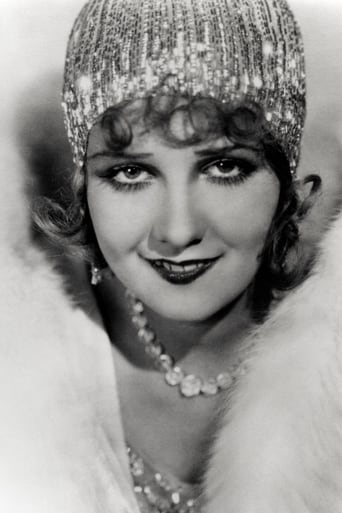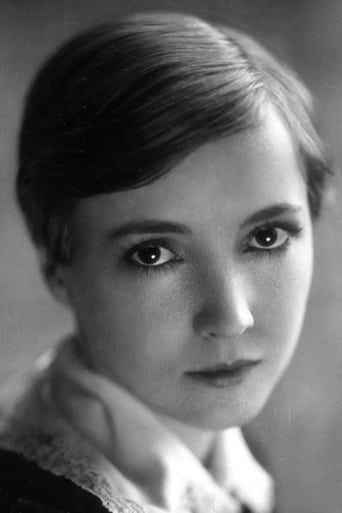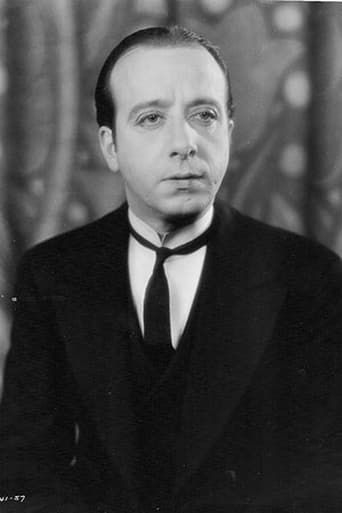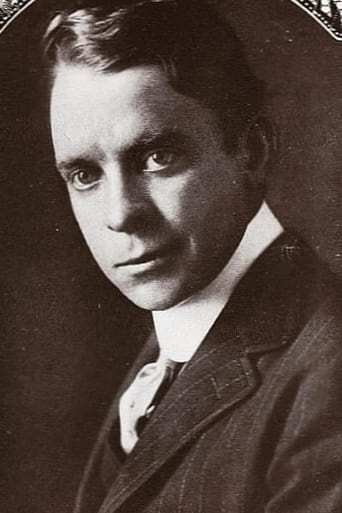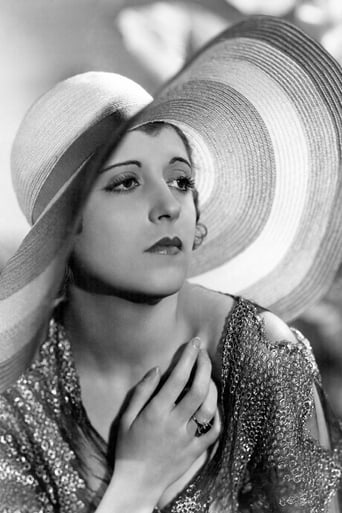Dynamixor
The performances transcend the film's tropes, grounding it in characters that feel more complete than this subgenre often produces.
Humaira Grant
It’s not bad or unwatchable but despite the amplitude of the spectacle, the end result is underwhelming.
Aneesa Wardle
The story, direction, characters, and writing/dialogue is akin to taking a tranquilizer shot to the neck, but everything else was so well done.
Zlatica
One of the worst ways to make a cult movie is to set out to make a cult movie.
JohnHowardReid
NOTES: Re-made (in a considerably cleaned-up version) by MGM in 1940 as "Two Girls On Broadway: with Lana Turner, Joan Blondell and George Murphy.COMMENT: Bessie Love brings Hank to vibrant life. This was her only acting nomination in a screen career that started with a bit part in "The Birth of a Nation" (1915) and continued right through to 1983. It takes talent indeed to so effectively portray a feisty vaudeville artist with such a grossly exaggerated opinion of her own ability. When the Ziegfeld-like character peremptorily decides to cut her number, our sympathies are all with him. He's dead right. Her act might go over okay in Hicksville, but on Broadway it signally lacks class, style and even a touch of elementary pizazz. Yes, Bessie's is a brilliant performance indeed, requiring just the right balance between aspiration and actuality. Although superbly calculated, her go-getting Hank almost always seems too natural and true-to-life. It's only when she breaks down and tearfully erases the make-up that artifice appears to get in the way. Oddly, this was the only scene that NYT critic Mordaunt Hall liked. That's sure a good example not only of the way acting styles change but of the way they impact upon and engage an audience. My daughter won't watch any movies made before 1935. She doesn't like the acting. "People don't talk like that in real life!" she claims. That's very true. But it also happens to be equally true of today's movies and television. The acting styles are totally different, yes. But our friends and neighbors still don't talk that movie way in real life. We just imagine they do!Anita Page, Hollywood's reigning love goddess of 1929 (only Greta Garbo received more fan mail), remains an unqualified delight. She looks the part, she acts the part, and even her scratchy, uncultured voice is just perfect. Like Miss Love, she was unable to capitalize on her role. You can no more make a career portraying beautiful, untalented showgirls than you can feisty, untalented hoofers. Miss Page retired from films in 1936. Sixty years later, however, she made a comeback, appearing in Sunset after Dark (1996), The Crawling Brain (2002), and Bob's Night Out (2004).Oddly, the one genuine vaudeville talent in our star trio, Charles King, (he of the ingratiating voice and charismatic manner), had the shortest Hollywood career of all. He made his debut in this film, then joined Marion Davies in Metro-Goldwyn-Mayer's disastrous "Five O'clock Girl" which executive producer William Randolph Hearst halted and scrapped when he didn't like the rushes. A bad omen. King never repeated his success in Broadway Melody. He played himself in a brief appearance in The Hollywood Revue (1929), then starred in Climbing the Golden Stairs, Chasing Rainbows, Remote Control, Oh Sailor Behave (all 1930) and Ladies Not Allowed (1932). And that was it. Seven films. Count them. He died in 1944. To add insult to injury, King's film credits are often confused with those of that delightfully moronic, stiff-as-a-board, cult western heavy, Charles King, whose legendary incompetence has charmed generations of fans (including me).Director Harry Beaumont, a veteran of the silents, managed the transition to sound with elegance and style whilst most of his contemporaries were floundering. Yet in a few short years, his career was virtually over (though he continued making the odd "B" movie now and then right up to 1947).Studio head Louis B. Mayer was determined not to be outdone or outshone by any other studio. If audiences wanted the novelty of sound, M-G-M was going to sock it to them in truck-loads. And, wow! What a track! Whilst the visuals are not always as innovative, catchy or emotionally rousing as the sound, oddly the only real visual disappointment lies in the Technicolor insert, "The Wedding of the Painted Doll". Miles removed from a Busby Berkeley number, the choreography is too static to garner much audience interest, especially in current prints where the number is disappointingly presented in washed-out black-and-white. DVD available through Warner Home Video. Quality rating: 9 out of ten.
sinel-47034
This show, a good little musical, probably would not win the Academy Award even a year later than it did. The novelty of producing a movie musical—two words not yet put together very often—must have enhanced its limited value.You *know* "Broadway Melody" is a sound picture in the first few minutes. Singing women and several musical bands all practicing in the opening sequence must have been a thrill for the cinematic audiences still infatuated with the "novelty" of sound.I should admit that I don't care for musicals, even movie musicals, but this one isn't bad. It's a cross between two later pictures—"A Chorus Line" and "A League of Their Own". It especially resembles A League of Their Own, with the taller sister doing well while barely trying and the struggling but more enthusiastic shorter sister.
Vonia
The first sound/talking film to win the award, known this year as "Outstanding Picture". As of 2013, it is also one of only ten musicals to achieve this distinction. Also of pioneering significance, one of the first film to feature a Technicolor sequence. The film follows a mostly unoriginal love-triangle between sisters Queenie & Hank Mahoney (Anita Page and Bessie Love) & Hank's (short for Henrietta, apparently) fiancé Eddie Kerns (Charles King), whom has agreed to assist with the sister's vaudeville act, transforming it for Broadway. Initially in love with the older sister and "stage manager" Hank, he "inevitably" falls in love with the younger, more beautiful Queenie, who avoids the situation by dating a notorious playboy, Jacques Warriner (Kenneth Thomson). Of course, she also ends up falling in love with Eddie, despite her desire to not take away something she knows her sister loves. Eventually everybody finds out everyone's true motives and intentions, and in the last scene Queenie and Eddie embrace, free now to live happily-ever-after, as Hank leaves to begin a thirty-week traveling show she was offered earlier. Free, that is, except for Queenie's guilt; she is still remorseful over the situation and expresses her sadness to Eddie. Intertwined through all of this are some acceptable dance and song numbers, some laughing moments, but really not much else. It is an alright film, but nowhere near the caliber of most other Best Picture Winners. I will admit that some of the dialogue, meaning, and even social cues/traditions were lost to me, due to the nearly-a-decade difference. The sound was difficult to listen to; Obviously at this early time, the studios were still far from mastery. In all, an entertaining look at early sound films, but not too much more depth.
Dalbert Pringle
The following are lyrics by Arthur Freed - A million lights they flicker there - A million hearts beat quicker there - No skies of gray on the Great White Way - That's the Broadway Melody.Released in 1929 - The Broadway Melody is a somewhat difficult movie to review since one feels that with every comment they must be reminding the readers that this was one of the very first all-sound pictures to come out of Hollywood.Set against the backstage hubbub of an elaborate Broadway musical revue that's being financed by big-shot, Frank Zanfield, The Broadway Melody's all-too-familiar plot revolves around the romances, the heartaches, and the struggles of certain prominent cast members who are appearing in the show.I found that far too often it became quite clear that the technicians behind the cameras and sound equipment didn't have a full grasp of what to do with this new medium - And, as a result, a number of the scenes came across as being noticeably clunky, disjointed and overlong.It's interesting to note that this film (now 85 years old) predates the Hayes Code, which placed strong restrictions on what could and could not be seen (or heard) in movies.This film does not contain any nudity, but there were a number of scenes where 2 of the female characters were shown in various states of undress, including shots of them parading around indoors in just their undergarments.Even though The Broadway Melody wasn't a particularly good picture, it was interesting to view it in the context of its significance and value in the history of early movie-making.*Trivia note* - Back in 1929 movies generally had 35-cent admission prices. With that in mind - This film grossed nearly $4 million upon its initial release.


